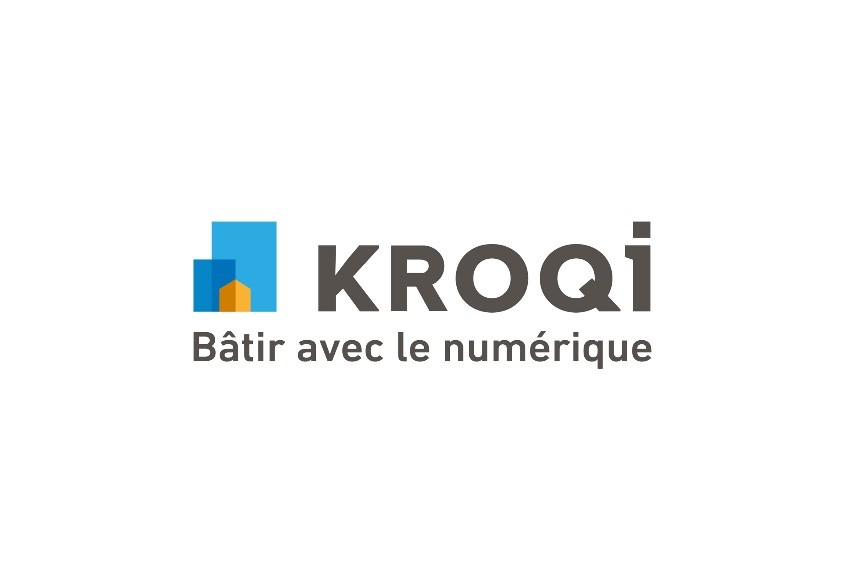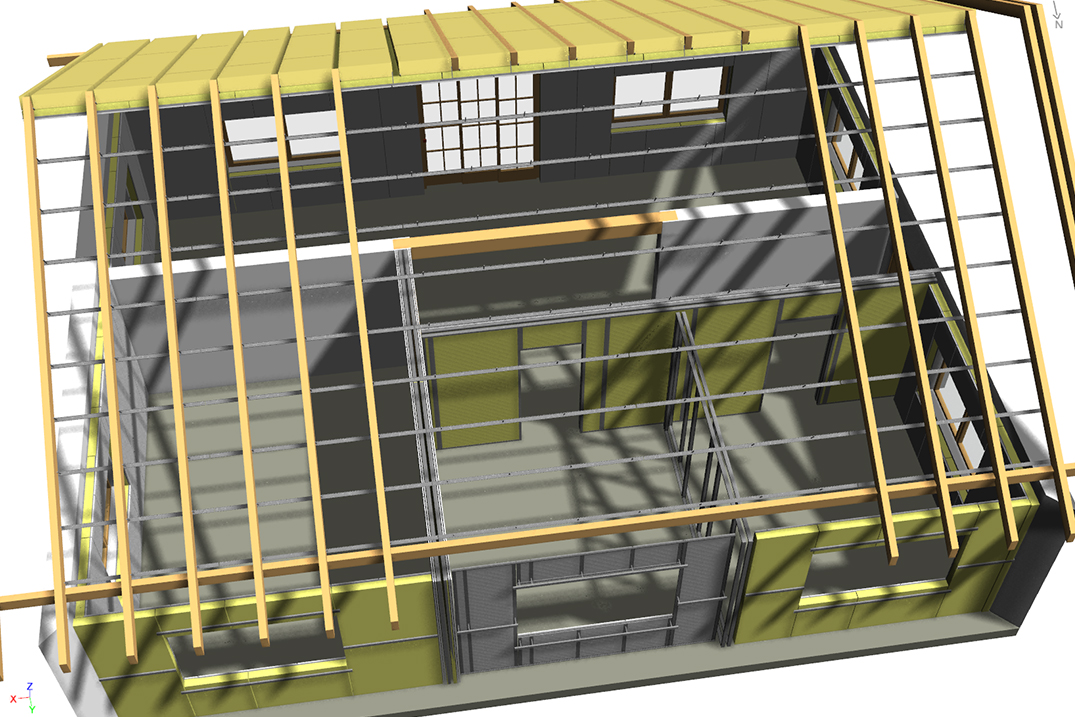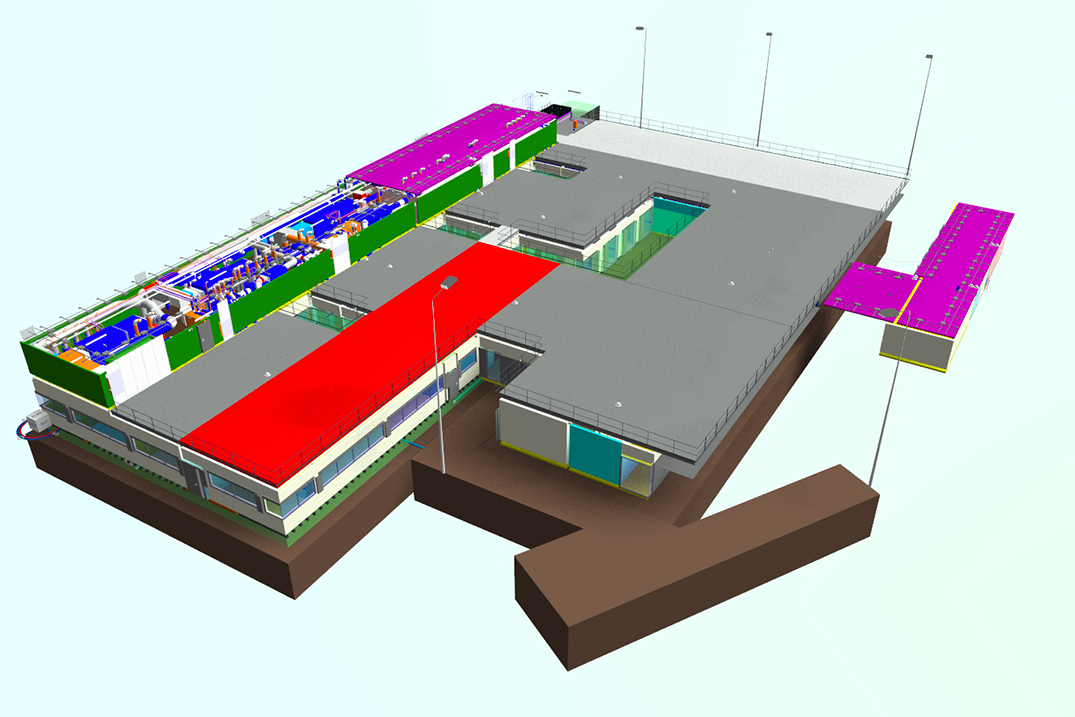All rights reserved © 2019 CSTB
A TALK WITH
Souheil SOUBRA, Director of Information Technology
The construction sector has begun its digital transition. The CSTB is actively contributing to the deployment of BIM and digital technologies by developing collaborative tools, partnerships and training courses.

PROJECTS

KROQI: free Web platform for all professionals in construction and planning
CSTB’Lab
The CSTB launched the CSTB’Lab, its startup accelerator

DISPLAY CLOSE-UP WITH TRISTAN GARCIA (WISEBIM) AND PIERRE MASCLOUX (CSTB’LAB)
KROQI: free Web platform for all professionals in construction and planning

Universalizing the digital design of buildings by 2022 is central to the French government’s housing strategy as it embraces “construction 2.0” for builders and communities. The government launched KROQI, a free tool for software publishers and their applications, to ease the digital transition and deployment of BIM by all stakeholders in the construction industry, especially VSEs/SMEs and self-employed workers.
Guiding stakeholders for effective management of BIM projects
Design, development, equipment and product manufacturing, installation, management, servicing, renovation, maintenance, demolition: At each stage of the building life cycle, digital technologies improve the effectiveness of stakeholders and advance structural quality.
Designed in consultation with construction organizations and professionals and developed by the CSTB at the request of public authorities, KROQI combines collaborative tools and innovative digital services tailored to the specific requirements of the building trades. By facilitating information exchange, the Web platform helps stakeholders achieve more efficient management of BIM projects at all stages, for both new-build and refurbishment projects.
KROQI enables construction sector companies to:
- Share and manage all types of files, including digital models generated by BIM
- View and check digital models without needing complex or costly tools
- Access business services to optimize professional activities, integrated with BIM design and collaborative processes
- Collaborate easily with employees, partners and customers (discussion threads, videoconferencing, shared management of calendars, task tracking, and more).
KROQI continues to add new services offered by software publishers joining the ecosystem to meet the needs of the construction and development trades.
In late May 2019, the platform had 30,696 unique users.
Find out more :
The CSTB launched the CSTB’Lab, its startup accelerator

Inaugurated in late 2017 by Julien Denormandie, secretary of state to the French Minister of Territorial Cohesion, the CSTB’Lab welcomed 9 new startups in 2018, demonstrating the commitment of the CSTB to supporting innovation and speeding up digital transition in the construction industry.
The CSTB’Lab is an accelerator for innovative startups in construction, developed in partnership with Impulse Partners.
By late 2018, it welcomed in 15 startups, giving them access to a dedicated scientific environment and guidance from researchers in the areas important to them so they can develop products and services for buildings and digital technologies. The CSTB’Lab also gives them access to CSTB research results. It promotes knowledge and technology transfer, boosting their growth and strengthening their competitiveness on the market.
CSTB’Lab is building a support ecosystem for startups that help them navigate through the stakeholders, flesh out and validate their technology solutions and find their target markets.
It also gives them access to facilities with advanced technology, such as the Oscar Niemeyer Room, a space for interactive virtual simulation.
This accelerator focuses on knowledge sharing and networking so the selected startups can quickly gain momentum from the outset.
The CSTB’Lab offers various types of customized scientific, technical and business support, as well as tailored services to stimulate the growth of startups. It was jointly funded by the European Regional Development Fund (ERDF).
The CSTB’Lab convenes its panel once quarterly to review companies competing in thematic calls for applications for startups offering innovative solutions for the development sector, BIM and digital modeling, maintenance, renovation and other areas of the construction industry.
Maintaining the energy unleashed in 2018, the CSTB’Lab has selected new members working in renovation, bringing its number of startups to 21. With this panel and upcoming campaigns, the CSTB’Lab is planning to open its doors to partners in 2019. They can then grow with its rich ecosystem of startups.
Find out more :

Properties of construction materials in BIM standards

Together with the industry’s trade organizations, the CSTB determines sets of properties associated with the construction products concerned by the Business Information Management (BIM) standards. The CSTB will be able to use this data to set up a process for the digital rendering of information contained in Technical Appraisals or derived from construction product certification processes.
In the context of the digital transition of the construction industry, the subject of data about construction products and systems is particularly important. The quality and traceability of this data, as well as its use throughout the phases of a construction project, are indeed crucial to the smooth progression of the different BIM processes: design, studies, specification, implementation and operation. If the product information is not managed properly, BIM as a whole becomes less meaningful.
The CSTB got involved in this issue very early on, by participating in the development of the PPBIM (Construction Product Properties for BIM) experimental standard. This standard is currently being transitioned to the European level (CEN) and to the international level (ISO) under the name PR NF EN ISO 23386.
In 2018, the CSTB contributed to two experimental activities involving this standard. The first action aimed to create the first descriptive construction object dictionary in French, containing 3,000 properties and 300 generic object models. The second activity was commissioned by the French public authorities acting as a contracting authority for the selection of a service provider and for the development of a platform to make this first dictionary available and manage it.
In parallel, several experiments were conducted in order to demonstrate how information contained in Technical Appraisals or Unified Technical Documents (DTUs) (“Digitization of the Rules) can be expressed in BIM-compatible formats and integrated into models conforming to the IFC standard.
The CSTB is continuing this work to build a unified database of construction products that have been tested or certified by the CSTB (EVALBIM project). This work is also part of the European BIM4REN project, for which product databases will be created, in order to boost the building energy renovation process, using emerging linked data technologies.
Le CSTB s’est impliqué très tôt dans cette problématique, en participant au développement de la norme expérimentale PPBIM (Propriétés des Produits pour le BIM). Cette norme est actuellement portée au niveau européen (CEN) et international (ISO) sous le nom PR NF EN ISO 23386.
En 2018, le CSTB a contribué à deux actions d’expérimentation de cette norme. La première visait à définir un premier dictionnaire français de description des objets de construction comportant 3000 propriétés et 300 modèles d’objets génériques. Pour la seconde, il a été mandaté par les pouvoirs publics en tant qu’AMO pour le choix d’un prestataire et le développement d’une plateforme afin de mettre à disposition et gérer ce premier dictionnaire.
En parallèle, plusieurs expérimentations ont été réalisées afin de démontrer comment des informations contenues dans des Avis Techniques ou des DTU (travaux « Numérisation des règles ») pouvaient être exprimées dans des formats compatibles avec le BIM, et insérées dans des maquettes au standard IFC.
Le CSTB poursuit ces travaux pour la constitution d’une base de données unifiées des informations sur les produits de construction ayant fait l’objet d’essais ou de certification au CSTB (projet EVALBIM). Ces travaux s’inscrivent également dans le cadre du projet européen BIM4REN, pour lequel des bases de données de produits seront constituées, afin d’alimenter le processus de rénovation énergétique de bâtiments, en utilisant les technologies émergentes du « Linked-data * ».
* Linked data aims to facilitate the online publication of structured data, in the form of interlinked data, so as to create a global information network, rather than in the form of data silos that are isolated from each other.

The CSTB and SID developed a BIM strategy for management
of cultural heritage centered on the user

The research partnership forged in 2016 between the Defense Infrastructure Service (SID) and the CSTB developed a BIM strategy for management of the cultural heritage of the French Ministry of Armed Forces: construction, use and maintenance of infrastructure, organization of core competencies and internal resources, and other areas.
This partnership covers the following: :
- Implementation of the procedure for digitization of the existing heritage of the ministry in BIM
- Implementation of BIM protocols and charters for dialogue between the ministry, facilitators and project management for the new buildings and infrastructure
- Experimentation with the approach using pilot sites and operations
- Strategic plan for BIM use
- Deployment of the eveBIM software within the secure network of the SID
- Guidance by CSTB Training teams in the implementation of a BIM training strategy for SID staff
The initial results, presented in July 2018, enabled the SID to refine its heritage management strategy at various levels: construction, operation and maintenance of infrastructure, organization of core competencies and internal resources, and other areas. The advances strengthened its vision of BIM, a tool that assists professionals and places the user at the center of the approach. To enable customized deployment of BIM to promote its adoption, the CSTB offered an approach that considers the specificities of the SID relating to digital use, professional practices and organization and establishes a BIM procedure as part of the design and construction of the French Navy’s laboratory for analysis, surveillance and evaluation (LASEM) in Brest.
The other major project conducted with the SID is an experiment with digital tools for existing infrastructure as part of the renovation of the Matelots base in Versailles.
-
Training
-
Software
-
Publications





